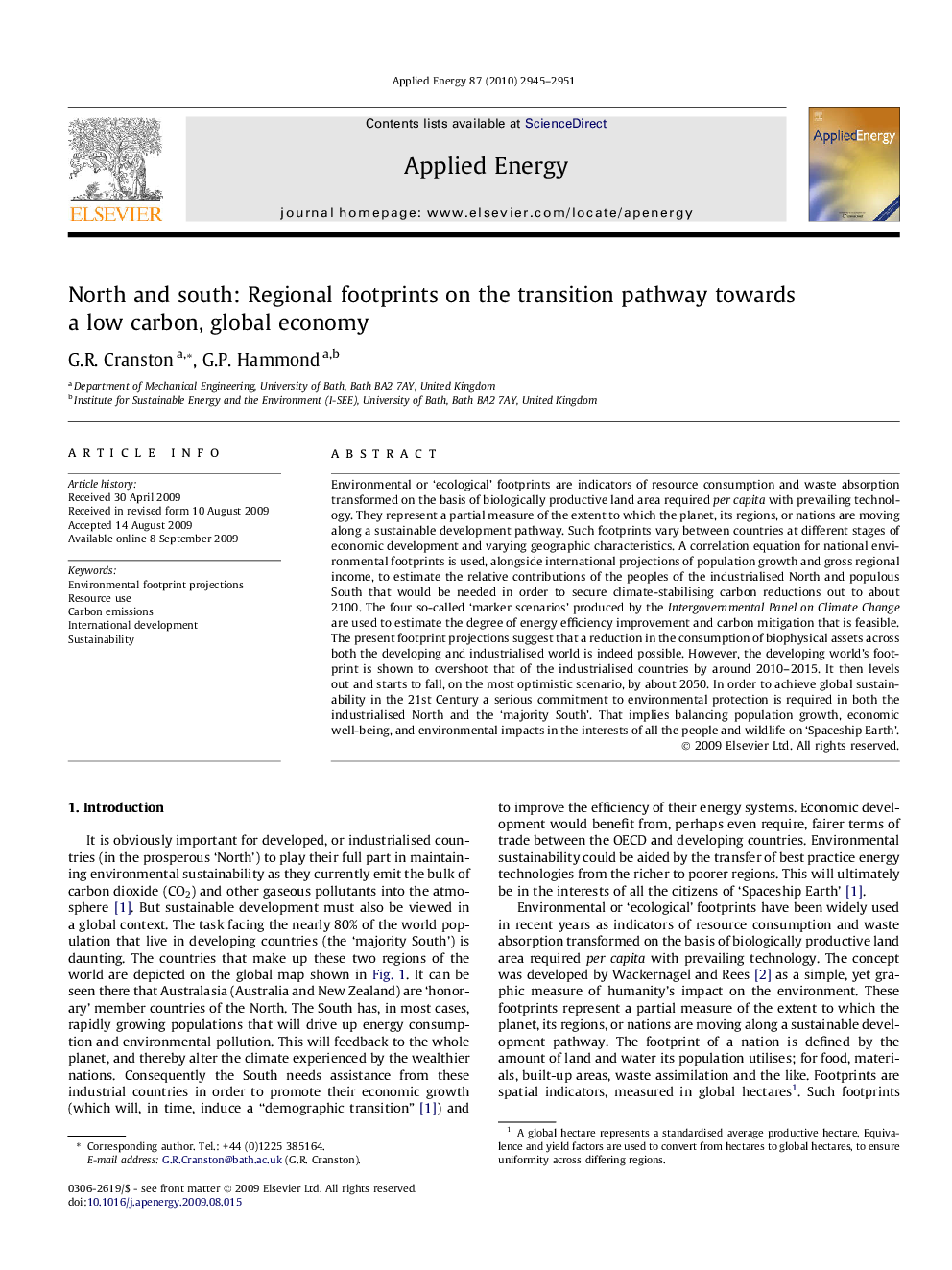| Article ID | Journal | Published Year | Pages | File Type |
|---|---|---|---|---|
| 244613 | Applied Energy | 2010 | 7 Pages |
Environmental or ‘ecological’ footprints are indicators of resource consumption and waste absorption transformed on the basis of biologically productive land area required per capita with prevailing technology. They represent a partial measure of the extent to which the planet, its regions, or nations are moving along a sustainable development pathway. Such footprints vary between countries at different stages of economic development and varying geographic characteristics. A correlation equation for national environmental footprints is used, alongside international projections of population growth and gross regional income, to estimate the relative contributions of the peoples of the industrialised North and populous South that would be needed in order to secure climate-stabilising carbon reductions out to about 2100. The four so-called ‘marker scenarios’ produced by the Intergovernmental Panel on Climate Change are used to estimate the degree of energy efficiency improvement and carbon mitigation that is feasible. The present footprint projections suggest that a reduction in the consumption of biophysical assets across both the developing and industrialised world is indeed possible. However, the developing world’s footprint is shown to overshoot that of the industrialised countries by around 2010–2015. It then levels out and starts to fall, on the most optimistic scenario, by about 2050. In order to achieve global sustainability in the 21st Century a serious commitment to environmental protection is required in both the industrialised North and the ‘majority South’. That implies balancing population growth, economic well-being, and environmental impacts in the interests of all the people and wildlife on ‘Spaceship Earth’.
